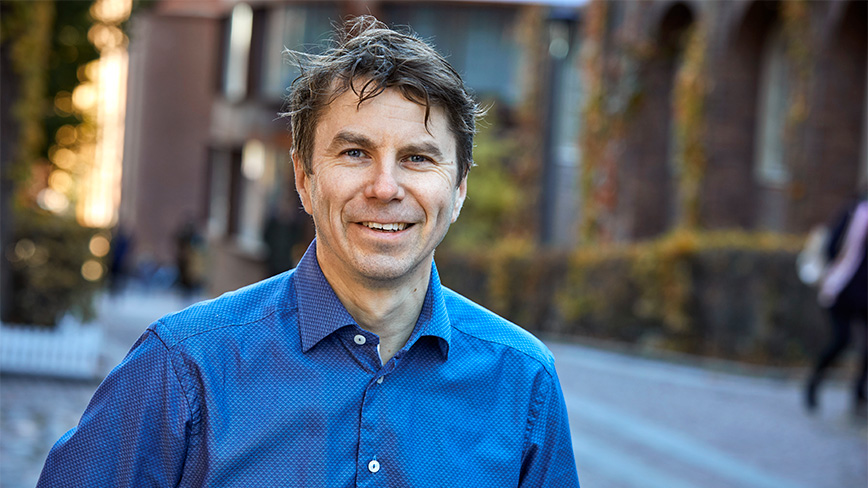”That he alone receives the prize shows his greatness”

Peter Savolainen, Head of the department Gene Technology, did his postdoc in Nobel Prize winner Svante Pääbo’s lab at the Max Planck Institute in Leipzig.
Here, he remembers his time there and comments on the Nobel Prize.
Between 1999 and 2000, Peter Savolainen did his postdoctorial period in Nobel Prize winner Svante Pääbo’s research group at the Max Planck Institute for evolutionary anthropology in Leipzig, Germany.
“I knew Svante from before, he had visited our department (Biotechnology) at KTH. I was working with the history and evolution of the dogs, which is a nearby area, so we started hanging out.”
What was it like doing your postdoc in his lab?
"It was very educational, with a lot of good researchers. But there was a quite individualistic atmosphere between doctoral students and postdocs, not really the collaborative climate I was used to. Perhaps it is like that at some successful institutions."
Do you have any particular memory of Svante Pääbo, what was he like?
"Pääbo is a brilliant researcher. He has a razor-sharp mind, Nobel Prize class you could say! If you want to learn how to write good scientific papers, you can look at his, they are textbook cases. They are short, concise and crystal clear described."
"He is also an entertaining speaker. As a private person he is nice and funny."
What do you think about him now receiving the Nobel Prize?
"It is very fun and very well-earned. Basically, he has singlehandedly both created this research field – Ancient DNA – and then all the time been at its forefront."
"It is worth noting that he is alone in receiving this prize, which is unusual nowadays. Usually, there are two or three persons who share the prize. But the receives it alone, because he has pushed forward all the important steps within Ancient DNA on his own. So that he alone receives the prize shows his greatness."
"A funny detail is that his career started with an article in Nature where he cloned and DNA sequenced DNA from an Egyptian mummy. This was the first study of its kind, in other words the start of Ancient DNA research. This Nature article made enabled him to start his research career."
But now, 40 years later, it is clear that this result was due to a contamination of the mummy sample. He had cloned and sequenced modern DNA, from himself or perhaps an archaeologist. So his successful career started with a false result, which helped him considerably in his career. Of course, this was completely unintentional, no cheating!"
Text: Sabina Fabrizi
